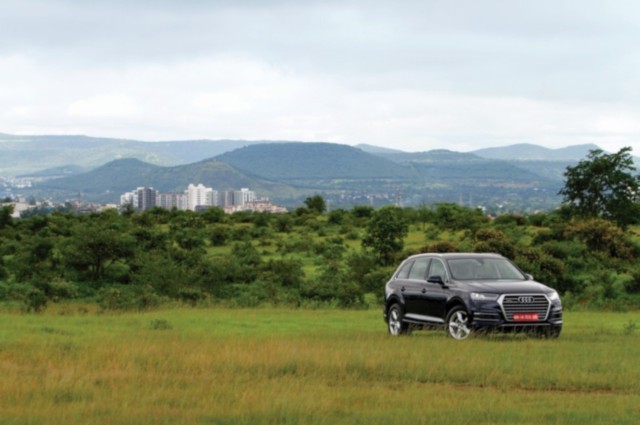
Audi India introduce the Q7 with a four-cylinder petrol engine. Is this the sensible, refined, luxury seven-seat deal we needed all along?
Story: Jim Gorde
Photography: Sanjay Raikar
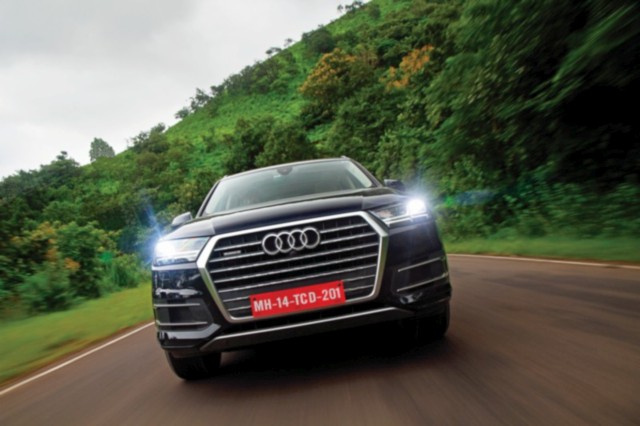
Everyone’s doing it. With diesel becoming the baddie of propulsion, petrol power is making a comeback with more carmakers introducing spark-ignition variants to cater to growing customer bases with purchase decisions fuelled by petrol. While there are those who offer sensibly priced alternatives alongside mammoth V8 versions with eye-watering price tags, Audi have gone the other way and taken the step towards the very roots of sensible, rather than the audacious. This move also comes in with growing competition, and not just from fellow German brands.
The Q7 40 TFSI, then, is actually a new model globally, sold as the 2.0 TFSI in some markets such as the United States, Malaysia, and Singapore. It packs just as much equipment and comfort features as its larger V6 TDI sibling, even available in the same ‘Premium Plus’ and ‘Technology’ trim levels, the latter being the one featured in this test.
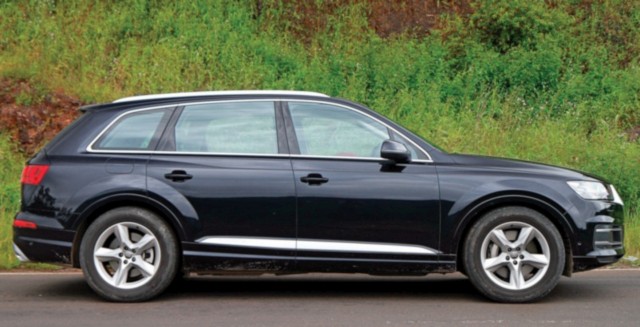
What’s different? Well, on the outside, nothing. You get the same chrome-rich grille, LED headlamps, 19-inch five-spoke alloy wheels, 255/55 rubber, and a huge panoramic sliding sun-roof. The fine Cricket leather inside, along with the rising centre display and fine trim accents with soft metal highlights are all akin to the TDI. What’s different is the engine powering it.
The Q7 40 TFSI quattro gets the 2.0-litre four-cylinder turbo-petrol. It’s seen overseas in the Q5, and also offered in the Porsche Macan. With 252 PS, it’s more than powerful enough, actually outnumbering the 3.0-litre V6 diesel by three horses. The torque is where the petrol doesn’t hold a candle to the turbo-diesel — 370 Nm versus 600 Nm — but with the pace at which the petrol engine gathers revs, and that 370 Nm of torque peaking at a low 1,600 rpm and staying on until 4,500, there’s little you end up asking from it. The eight-speed tiptronic automatic powers all four wheels through the quattro intelligent-all-wheel-drive. It’s actually their anniversary: 35 years of quattro, and their legendary rallying prowess. You also have the five Audi drive select modes which allow you to further fine-tune your ride characteristics. More on those later.
Before I forget, this isn’t a driver’s car. You can’t do a sub-five-second 0-100 km/h run (It did manage a decent 8.6 seconds!) and it won’t blast down the highways at 250 km/h (Audi claim a 233-km/h top speed, both of which are illegal here in India, anyway). What this is, though, is a proper luxury car for seven, and an incredible mile-muncher for the active family. Practicality comes first.
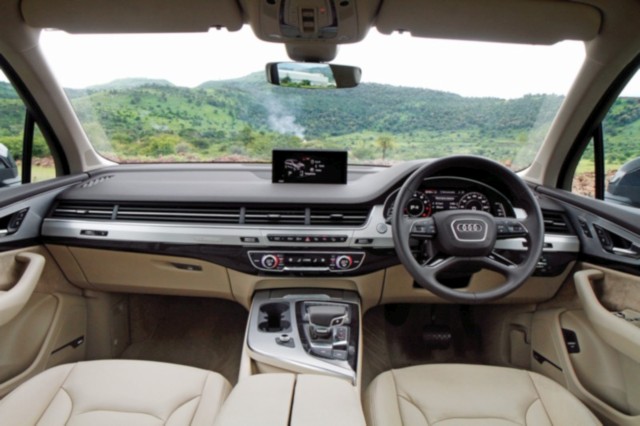
Speaking of which, the Q7 40 TFSI packs extensive connectivity features. You get Bluetooth, a number of USB ports for all sorts of smart devices. Then, there’s the storage. The sheer number of spaces is astounding. The door-pockets are huge, front and rear. The front centre console has a lifting cover, which doubles up as a split arm-rest. The area between the MMI Touch and the arm-rest also allows usable space. The two cup-holders have space between them for the key. Yes, this one has keyless entry and go — the way all modern cars should be. Seating comfort is top-notch, and it’s not a cabin you can get tired in, or bored of.
It gets better at the rear. The knee-room for all passengers is generous and makes you think twice about the competition. The sliding second row also split-folds 35:30:35 and adds to flexibility when carrying unconventional cargo, or more people. The third row, which can seat average-sized Indian adults, can have more knee-room with the second row slid forward. There are power controls for the third-row seats; no manual labour required here.
The cargo area was equipped with a load separator as well as cargo reel to keep varying kinds of cargo in check. The sliders help further enhance it usability. With all seats up, the boot volume is a compact hatchback-like 295 litres. It obviously goes up as you begin tumbling seats down. With both the third and second rows folded down, the available volume is an incredible 2,075 litres, though it won’t really be used as a transport vehicle that often, or so I’d like to think.
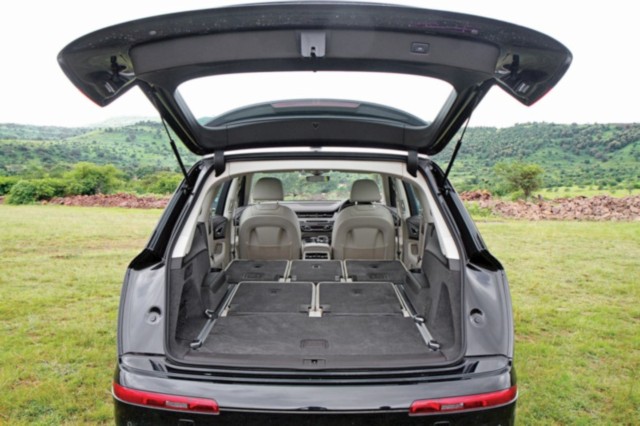


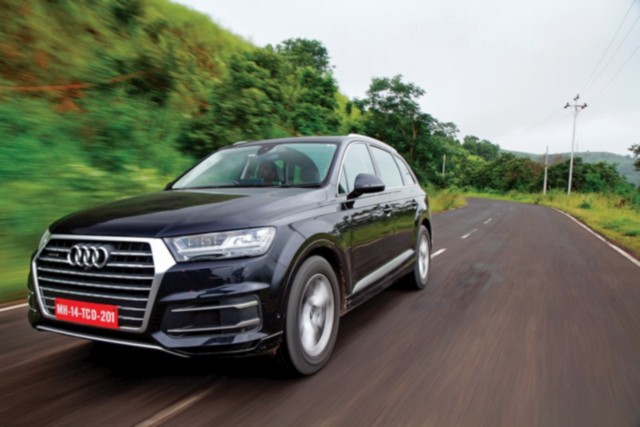


















Leave a Reply